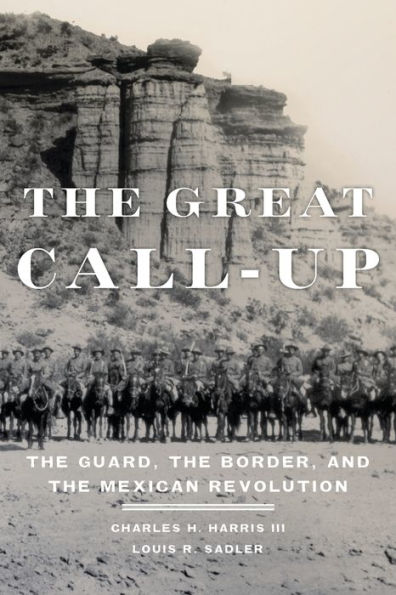The Great Call-Up: The Guard, the Border, and the Mexican Revolution
On June 18, 1916, President Woodrow Wilson called up virtually the entire army National Guard, some 150,000 men, to meet an armed threat to the United States: border raids covertly sponsored by a Mexican government in the throes of revolution. The Great Call-Up tells for the first time the complete story of this unprecedented deployment and its significance in the history of the National Guard, World War I, and U.S.-Mexico relations. Often confused with the regular-army operation against Pancho Villa and overshadowed by the U.S. entry into World War I, the great call-up is finally given due treatment here by two premier authorities on the history of the Southwest border. Marshaling evidence drawn from newspapers, state archives, reports to Congress, and War Department documents, Charles H. Harris III and Louis R. Sadler trace the call-up’s state-based deployment from San Antonio and Corpus Christi, along the Texas and Arizona borders, to California. Along the way, they tell the story of this mass mobilization by examining each unit as it was called up by state, considering its composition, missions, and internal politics. Through this period of intensive training, the Guard became a truly cohesive national, then international, force. Some units would even go directly from U.S. border service to the battlefields of World War I France, remaining overseas until 1919. Balancing sweeping change over time with a keen eye for detail, The Great Call-Up unveils a little-known yet vital chapter in American military history.
1120737274
The Great Call-Up: The Guard, the Border, and the Mexican Revolution
On June 18, 1916, President Woodrow Wilson called up virtually the entire army National Guard, some 150,000 men, to meet an armed threat to the United States: border raids covertly sponsored by a Mexican government in the throes of revolution. The Great Call-Up tells for the first time the complete story of this unprecedented deployment and its significance in the history of the National Guard, World War I, and U.S.-Mexico relations. Often confused with the regular-army operation against Pancho Villa and overshadowed by the U.S. entry into World War I, the great call-up is finally given due treatment here by two premier authorities on the history of the Southwest border. Marshaling evidence drawn from newspapers, state archives, reports to Congress, and War Department documents, Charles H. Harris III and Louis R. Sadler trace the call-up’s state-based deployment from San Antonio and Corpus Christi, along the Texas and Arizona borders, to California. Along the way, they tell the story of this mass mobilization by examining each unit as it was called up by state, considering its composition, missions, and internal politics. Through this period of intensive training, the Guard became a truly cohesive national, then international, force. Some units would even go directly from U.S. border service to the battlefields of World War I France, remaining overseas until 1919. Balancing sweeping change over time with a keen eye for detail, The Great Call-Up unveils a little-known yet vital chapter in American military history.
26.95
Out Of Stock
5
1

The Great Call-Up: The Guard, the Border, and the Mexican Revolution
576
The Great Call-Up: The Guard, the Border, and the Mexican Revolution
576Paperback(First Edition)
$26.95
Related collections and offers
26.95
Out Of Stock

Product Details
| ISBN-13: | 9780806155920 |
|---|---|
| Publisher: | University of Oklahoma Press |
| Publication date: | 11/17/2016 |
| Edition description: | First Edition |
| Pages: | 576 |
| Product dimensions: | 6.10(w) x 9.20(h) x 1.50(d) |
About the Author
From the B&N Reads Blog
